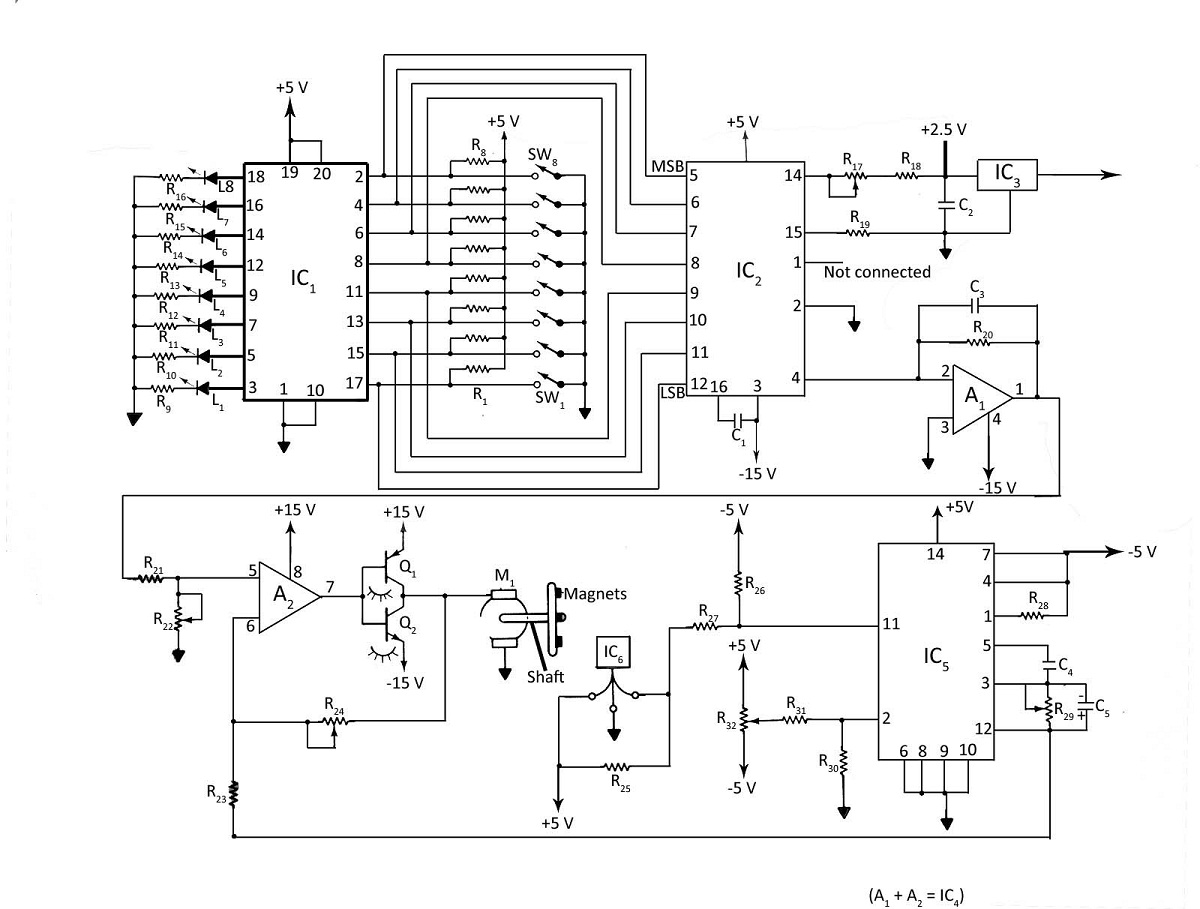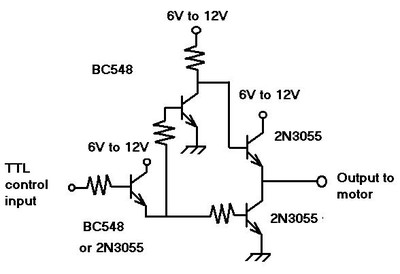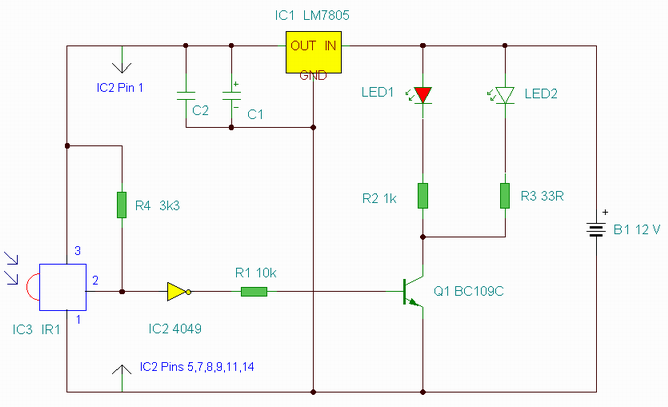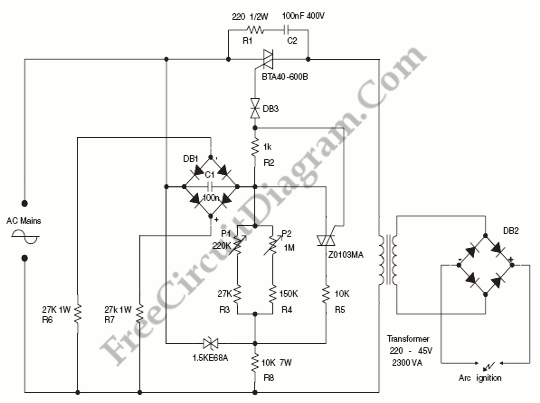
Digital DC Motor Speed Control With LED Display

Various techniques can be employed to control the speed of a DC motor, including phase-locked-loop principles, digital inputs, or analog inputs. Additionally, the motor's speed can be monitored using LED or LCD displays. The digital DC motor speed controller project demonstrates the use of digital inputs to regulate the speed of a DC motor. To process the digital inputs, a D/A converter is utilized, while a combination of a speed sensor and frequency-to-voltage (F/V) converter measures and converts the motor speed into an appropriate voltage. The block diagram of a digitally controlled DC motor is illustrated in Figure 1-1. The output of the D/A converter corresponds to the binary equivalent of its digital inputs. A differential amplifier compares the output of the D/A converter with the output voltage from the F/V converter. The resulting difference voltage feeds into the power amplifier/driver stage, which subsequently drives the DC motor. The speed sensor converts the motor's speed into a pulse waveform, which is then transformed into a proportional voltage by the F/V converter. Since the output of the F/V converter is processed through negative feedback with the differential amplifier, the motor is maintained at a constant speed corresponding to the digital input settings. The differential amplifier's role is crucial, as it ensures a specific voltage difference between its two input voltages, thereby keeping the motor speed constant at the selected digital input setting. When all digital inputs are set to logic 1, the D/A converter outputs its maximum positive voltage, causing the motor to operate at maximum speed. Conversely, if the motor is initially running at a certain speed and the digital inputs are adjusted to lower the speed, the output voltage of the D/A converter decreases, which reduces the differential amplifier's input voltage difference and subsequently lessens the motor drive. The motor's speed will decrease until the F/V converter's output voltage reaches the necessary input difference for the differential amplifier to maintain a constant speed. The required difference voltage to sustain constant motor speed depends on the motor's physical dimensions and electrical characteristics, including torque, speed, inertia, and current and voltage ratings. Consequently, a constant difference voltage—and thus a constant motor speed—is achieved through negative feedback. The digital inputs can be calibrated in revolutions per minute (rpm), and the speed sensor's output can be connected to a frequency meter or indicator for speed monitoring. Figure 1-2 displays the schematic diagram of the digitally controlled DC motor. The circuit incorporates several integrated circuits (ICs): SN74LS241 octal tri-state buffer, MC1408 8-bit D/A converter, MC1403 2.5-V voltage reference, LF353 dual op-amp, 9400 converter, and a Hall-effect transducer. The desired digital inputs are selected using a switch assembly, and eight LEDs indicate the state of the digital inputs applied to the D/A converter. When a switch is open, the corresponding LED illuminates. The 74LS241 octal tri-state buffer is employed to isolate the LEDs from the switches while providing the necessary current drive for the LEDs. The Hall effect is utilized in this design, where a current-carrying semiconductor strip (typically silicon) placed in a transverse magnetic field generates an electromotive force (emf) across its edges, proportional to the product of the current and the magnetic field strength.Various techniques can be used to control the speed of a dc motor, such as using the phase-locked-loop principles, digital inputs, or analog inputs. If desired, the speed of the motor may also be monitored with LED or LCD displays. The project digital DC motor speed controller illustrates the use of digital inputs to control the speed of a dc motor.
To process the digital inputs, a D/A converter will be used, while a combination of a speed sensor and F/V converter will be used to sense and convert the speed into an appropriate voltage. Figure 1-1 shows the block diagram of a digitally controlled dc motor. The output of the D/ A converter is proportional to the binary equivalent of its digital inputs. The differential amplifier compares the D/A converter output with the output voltage of the F/V converter.
The resulting difference voltage is an input to the power amplifier/driver stage. The output of the power amplifier/driver then drives the dc motor. The speed sensor converts the motor`s speed into a pulse waveform, which is in turn converted into a proportional voltage by the F/V converter since the output of the F/V converter is processed using a negative feedback formed with the differential amplifier, the motor is kept at a constant speed corresponding to the setting of the digital inputs. In fact, the key to the operation of the circuit is that the differential amplifier maintains a specific difference between two input voltages so that motor speed is constant at the selected digital input setting.
Since the output of the D/A converter is directly proportional to the binary equivalent of its digital inputs, the output voltage of the D/A converter will be maximum positive when all the inputs are logic 1. This means that when all inputs are logic 1 the motor will run at a maximum speed. Now suppose that the motor is initially running at a certain speed and digital inputs have just been set to lower the speed.
This action will reduce the output voltage of the D/A converter, which in turn reduces the difference between the two input voltages of the differential amplifier, resulting in a reduced drive for the motor. Therefore, the speed of the motor will be lowered until the output of the F/V converter is such that a specific input difference voltage for the differential amplifier, which is required to keep the motor running at a constant speed, is reached.
The difference voltage necessary to maintain the constant motor speed is a function of the physical dimensions and electrical characteristics of the motor. These include torque, speed, inertia, and current and voltage ratings of the motor. Thus the constant difference voltage and, in turn, a constant motor speed is maintained through the use of negative feedback.
The digital inputs may be calibrated in terms of revolutions per minute (rpm). In addition, the output of the speed sensor may be applied to the frequency meter/indicator to monitor the motor`s speed. Figure l-2 shows the schematic diagram of a digitally controlled dc motor. As shown in the figure, the following ICs are used: SN74LS241 octal tri-state buffer, MCl408 8-bit D/A converter, MCl403 2.
5-V voltage reference, LF353 dual op-amp, 9400 converter, and the Hall-effect transducer. The desired digital inputs are selected by the use of a switch assembly. The eight LEDs indicate the state of the digital inputs applied to the D/A converter. When a switch is open, the corresponding LED lights up. The 74LS24I octal tristate buffer is used here because it isolates the LEDs from switches and also provides a current drive for the LEDs. A number of materials exhibit the Hall effect in that when a current-carrying semiconductor strip (usually silicon) is placed in the transverse (perpendicular) magnetic field, the combination produces an electromotive force (emf) between the opposite edges of the strip.
This emf is proportional to the product of the current 🔗 External reference
To process the digital inputs, a D/A converter will be used, while a combination of a speed sensor and F/V converter will be used to sense and convert the speed into an appropriate voltage. Figure 1-1 shows the block diagram of a digitally controlled dc motor. The output of the D/ A converter is proportional to the binary equivalent of its digital inputs. The differential amplifier compares the D/A converter output with the output voltage of the F/V converter.
The resulting difference voltage is an input to the power amplifier/driver stage. The output of the power amplifier/driver then drives the dc motor. The speed sensor converts the motor`s speed into a pulse waveform, which is in turn converted into a proportional voltage by the F/V converter since the output of the F/V converter is processed using a negative feedback formed with the differential amplifier, the motor is kept at a constant speed corresponding to the setting of the digital inputs. In fact, the key to the operation of the circuit is that the differential amplifier maintains a specific difference between two input voltages so that motor speed is constant at the selected digital input setting.
Since the output of the D/A converter is directly proportional to the binary equivalent of its digital inputs, the output voltage of the D/A converter will be maximum positive when all the inputs are logic 1. This means that when all inputs are logic 1 the motor will run at a maximum speed. Now suppose that the motor is initially running at a certain speed and digital inputs have just been set to lower the speed.
This action will reduce the output voltage of the D/A converter, which in turn reduces the difference between the two input voltages of the differential amplifier, resulting in a reduced drive for the motor. Therefore, the speed of the motor will be lowered until the output of the F/V converter is such that a specific input difference voltage for the differential amplifier, which is required to keep the motor running at a constant speed, is reached.
The difference voltage necessary to maintain the constant motor speed is a function of the physical dimensions and electrical characteristics of the motor. These include torque, speed, inertia, and current and voltage ratings of the motor. Thus the constant difference voltage and, in turn, a constant motor speed is maintained through the use of negative feedback.
The digital inputs may be calibrated in terms of revolutions per minute (rpm). In addition, the output of the speed sensor may be applied to the frequency meter/indicator to monitor the motor`s speed. Figure l-2 shows the schematic diagram of a digitally controlled dc motor. As shown in the figure, the following ICs are used: SN74LS241 octal tri-state buffer, MCl408 8-bit D/A converter, MCl403 2.
5-V voltage reference, LF353 dual op-amp, 9400 converter, and the Hall-effect transducer. The desired digital inputs are selected by the use of a switch assembly. The eight LEDs indicate the state of the digital inputs applied to the D/A converter. When a switch is open, the corresponding LED lights up. The 74LS24I octal tristate buffer is used here because it isolates the LEDs from switches and also provides a current drive for the LEDs. A number of materials exhibit the Hall effect in that when a current-carrying semiconductor strip (usually silicon) is placed in the transverse (perpendicular) magnetic field, the combination produces an electromotive force (emf) between the opposite edges of the strip.
This emf is proportional to the product of the current 🔗 External reference
Warning: include(partials/cookie-banner.php): Failed to open stream: Permission denied in /var/www/html/nextgr/view-circuit.php on line 713
Warning: include(): Failed opening 'partials/cookie-banner.php' for inclusion (include_path='.:/usr/share/php') in /var/www/html/nextgr/view-circuit.php on line 713





